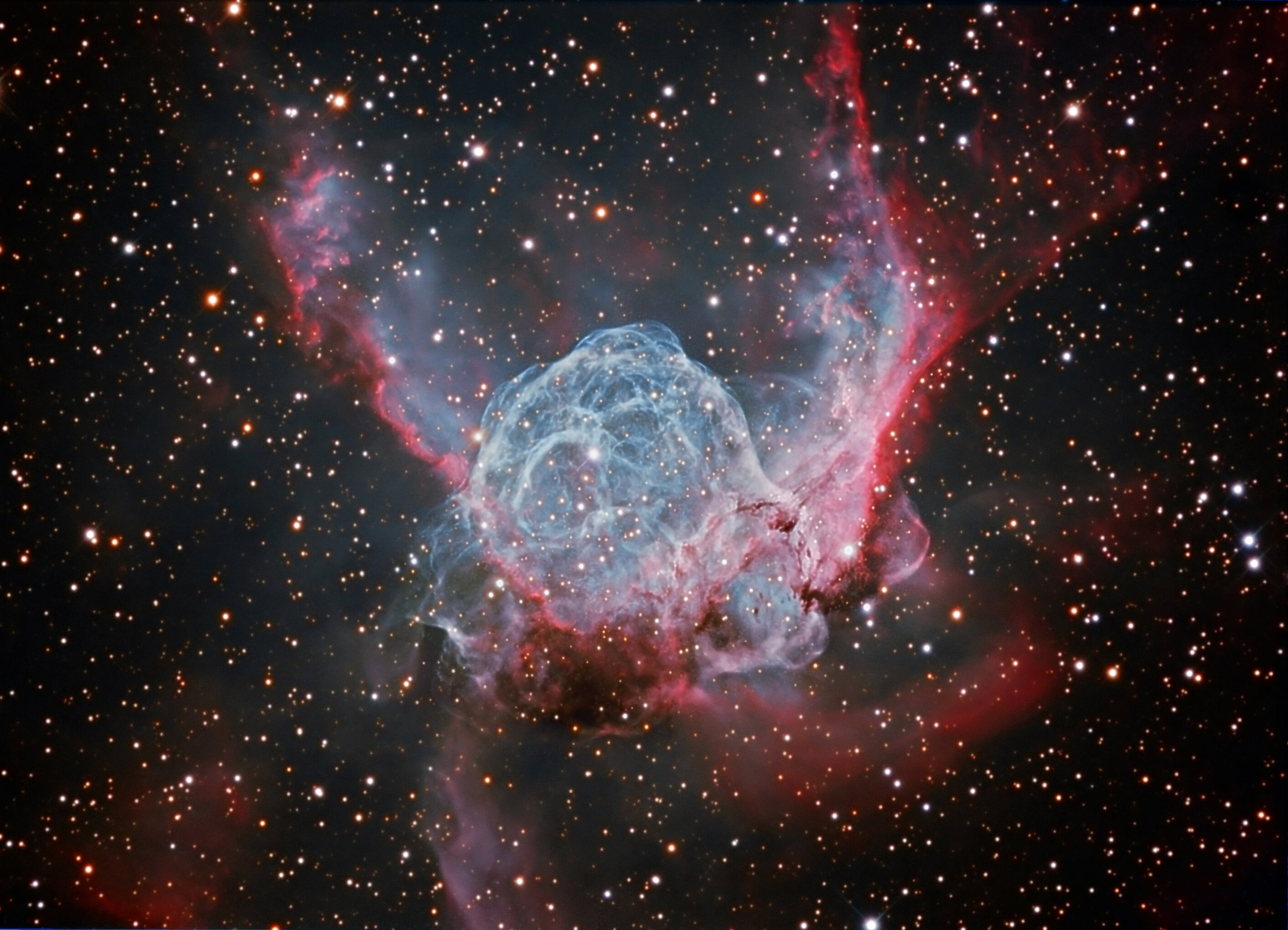
Thor’s Helmet (NGC 2359) is an emission nebula in Canis Major that has been relegated to obscurity by the brighter Orion Nebula (M42) in the same part of the sky. Like many HII regions, though, NGC 2359 is a fascinating object and worthy of attention from all deep-sky observers.
Between 12,000 and 15,000 light-years away, Thor’s Helmet is roughly 10 times more distant than M42. This cloud is about 30 light-years across and surrounds Wolf-Rayet star WR7 (HD 56925). Compared to our Sun, this star is 280,000 times brighter, 16 times more massive, and 1.3 times larger. It’s emitting copious radiation, typical of short-lived massive stars that end in a blazing supernova explosion. This might be one of those rare stars that has already exploded but the light of its supernova hasn’t reached us yet.
Cassiopeia’s Bubble Nebula (NGC 7635) is a similar object, though less pronounced. Thor’s Helmet has bright “wings” and a more complex shape due to interactions with adjacent molecular clouds. Thousands of solar masses of gas lie within this nebula complex. Images show six projections of ionized gas, of which I’ve visually seen three using a 20-inch telescope from the Florida Keys.
To locate NGC 2359, scan about 9° northeast of Sirius. This object is smack on the galactic plane. The nebula is easy to find with an 8-inch telescope. The wings require a slightly larger aperture but aren’t too difficult. NGC 2361 is a bright feature on the round top of the helmet. Other neighbors in the same part of the sky include the open clusters NGC 2374 about 1.5° east, Haffner 6 about 0.5° east, and Basel 11A about 1° southwest.
The winter Milky Way is often missed due to frigid observing conditions, but this weird object is worth a look.









